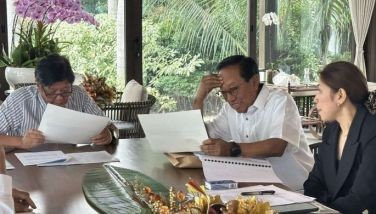Philippine population hits 101.6 M this year
MANILA, Philippines - The country’s population is projected to reach 101.6 million this year, according to the Philippine Statistics Authority.
PSA interim assistant national statistician Socorro Abejo made the projection at the official start of Population Census 2015 (PopCen 2015), which runs until Sept. 6.
The PSA, a line agency of the National Economic and Development Authority (NEDA), is considered an expanded National Statistics Coordinating Board (NSCB).
The 101.6 million forecast is roughly 10 percent higher than the 2010 official count. The annual growth rate is 2.1 percent, slightly slower than the 2.42 percent rate from 1990 to 1995.
A census in 1903 – the first under the US colonial era – showed the country’s population at 7.6 million.
The 13th census undertaken in 2010 showed the official population count at 92.3 million.
A total of 93,000 enumerators or interviewers have been sent out to collect data from 42,028 barangays nationwide. The target is one interviewer for every 300 to 400 households.
One supervisor is assigned to every four enumerators, or a total of 23,000 team supervisors, who are in turn managed by 5,000 area supervisors.
The entire process, which actually started last year, has a budget of P2.5 billion.
By September, the data will be tabulated and processed. Initial data are set for release in December or early January next year. Complete data and official data will be made public sometime in the second semester of 2016.
The PSA also reminded the public that failure or refusal to give accurate information to interviewers is punishable under the law.
“There is a penalty of one-year imprisonment and/or a fine of P100,000,” Abejo added.
Meanwhile, Socioeconomic Planning Secretary Arsenio Balisacan emphasized that getting accurate statistical information is key to effective allocation of scarce government resources.
“Accurate and reliable statistical data and evidence are crucial in determining how to allocate limited resources,” Balisacan said.
“We in government rely on these to ensure that the policy decisions and actions we make truly respond to people’s needs,” he said.
“The census is particularly useful for development planning from the national to local levels, for investment programming and for targeting beneficiaries of social services such as health, education, housing and social protection,” he pointed out.
He also said the census is an important input for political exercises, as the formation of congressional districts and cities depends partly on population count.
Even businesses and industries consider census data useful for identifying sites for their businesses, as well as for determining consumer demand for various goods and services, and improving labor supply.
“Throughout my professional career, both in academe and in government, I have seen the power that high-quality data can lend to the formulation of public policies that affect millions of lives,” Balisacan, who is also NEDA director-general, said.
Balisacan said academic and research institutions use census data to study population growth and geographic distribution.
- Latest
- Trending
































